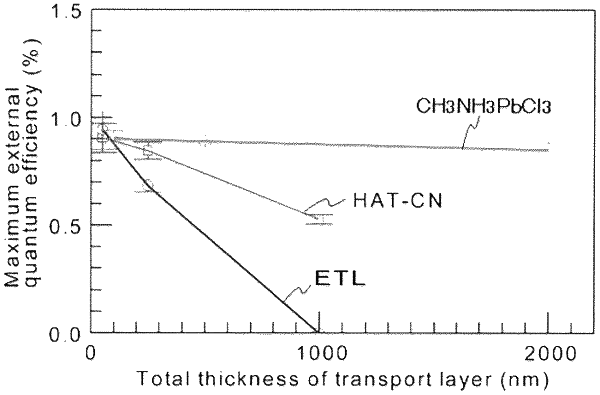| CPC H10K 50/135 (2023.02) [H10K 50/17 (2023.02); H10K 50/171 (2023.02); H10K 85/30 (2023.02); H10K 2102/351 (2023.02)] | 16 Claims |

|
1. A method for improving light-emission from an organic light-emitting device having at least one perovskite layer, comprising:
forming an anode,
forming a light-emitting layer,
forming the at least one perovskite layer so that a total thickness of the at least one perovskite layer is 3000 nm or more, the layer comprising a perovskite-type compound represented by the following general formula (4):
A3BX3 (4)
wherein A3 represents an organic cation, B represents a divalent metal ion, X represents a halogen ion, and three X's may be the same as or different from each other, and
forming a cathode,
wherein the method suppresses angle dependency of the organic light-emitting device.
|